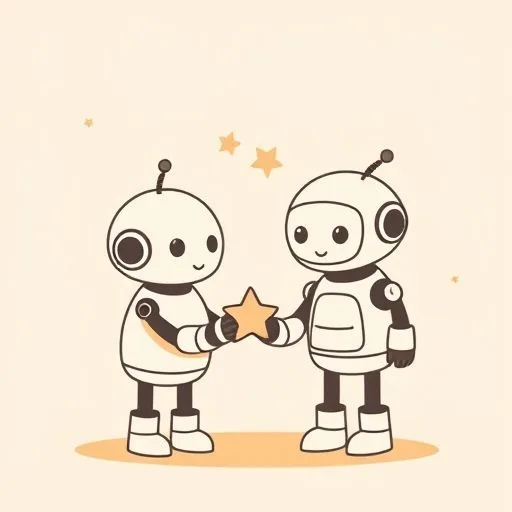
How Are Makerspaces Revolutionizing Children’s Learning?
Just last weekend, my 7-year-old daughter and I turned our living room into a robotics lab, complete with cardboard castles and blinking LED lights—seeing her face light up as those lights actually work before those market numbers blew my mind! I remember when makerspaces first started gaining traction in schools—what began as simple areas dedicated to crafting and tinkering has exploded into vibrant learning ecosystems where kids can bring their imagination to life! The numbers tell an incredible story: the K-12 makerspace materials market has grown from $1.02 billion in 2024 to an anticipated $1.1 billion in 2025, with projections to reach a staggering $1.53 billion by 2029! This isn’t just about more funding or equipment—it represents a big change in how kids learn by doing journeys for our children.
Picture this: your child isn’t just sitting at a desk memorizing facts; they’re building, creating, problem-solving, and discovering through doing. That’s the magic of AI-based makerspaces! They’re transforming education by turning abstract concepts into tangible experiences that kids can touch, manipulate, and truly understand. When my daughter got her first robotics kit last year, watching her face as she reassembled a simple circuit and saw a light turn on—that moment of pure exhilaration is exactly what makerspaces are all about! After those sessions, we often whip up kimchi pancakes together—mixing our Korean heritage with these tech adventures, and that’s when some of our best conversations happen!

How Does AI Enhance the Playful Learning Experience?
Now, let’s talk about the most electrifying development in this space: the fusion of AI with makerspace education! This isn’t about robots replacing teachers or screens replacing playgrounds—it’s about technology enhancing the natural curiosity and joy of discovery that children already possess. I’m absolutely thrilled about how AI-based curricula are revolutionizing learning for grades 1-3, helping young minds understand complex concepts through interactive, playful experiences.
Take the “Thinking with KIBO” curriculum launched by Kinderlab Robotics, for example. This brilliant program introduces first to third graders to AI concepts through hands-on interaction with a fun, approachable robot. Kids aren’t just learning about algorithms and machine learning; they’re exploring how these technologies work in ways that respect their developmental stage and what if we approached technology as something that brings wonder rather than intimidation?
Studies show: AI in education isn’t just a passing trend—it’s enhancing personalized learning by providing real-time feedback, adapting to individual student needs, and creating experiences that engage young minds on their terms. I’ve witnessed this firsthand when exploring various educational tools with my daughter—how a program can recognize when she’s grasping a concept and introduce the next challenge at just the right moment. That is the power of AI meeting playfulness!

What Skills Will Kids Develop in AI Makerspaces for Tomorrow’s World?
As parents, we’re all thinking about the skills our children will need in a rapidly changing world. That’s what excites me so much about the makerspace movement—it’s not just preparing kids for jobs that don’t exist yet; it’s nurturing the mindset needed to thrive in any future they might create. The blend of creativity, technical literacy, and problem-solving that AI-based makerspaces provide is exactly the foundation they need.
What really energizes me is how these approaches are democratizing access to advanced learning. While challenges like tariffs might increase the costs of equipment like 3D printers and robotics kits, the beauty of makerspace principles is that you can start with simple materials. Cardboard, recyclables, basic electronics—all can become gateways to learning complex concepts. My daughter and I recently spent an entire weekend creating “junk bots” from household items, and the engineering principles she absorbed were incredible! That weekend also led to us trying a new recipe—kimchi dumplings stuffed with mozzarella, a perfect blend of our heritage that the whole family devoured!
The vision that particularly resonates with me is one every parent can share: helping our children develop not just technical skills, but the character traits that will serve them throughout life

How Can You Bring AI Makerspace Magic Into Your Home?
You don’t need fancy equipment or a dedicated lab at home to embrace the makerspace philosophy—though some of those tools are pretty amazing! What you absolutely do need is curiosity, a willingness to let your child explore and sometimes fail, and the belief that learning happens everywhere, all the time.
Start small—really small! When my daughter expressed interest in robotics, we began with basic circuit kits available online. The look on her face when she connected a battery to a small motor and watched a propeller spin—that moment of pure discovery was priceless! These initial experiences create stepping stones to more complex learning without overwhelming young minds.
The internet is absolutely bursting with resources for parents interested in bringing makerspace concepts home. From simple YouTube tutorials to detailed project guides, you’ll find support at every step. Remember, the goal isn’t perfection—it’s participation. When your child sees you learning alongside them, modeling curiosity and problem-solving, you’re teaching the most powerful lesson of all: that education is a joyful, lifelong adventure!
What personally melts my heart is seeing my daughter apply concepts she’s learned from these AI technologies to everyday play. The other day, she explained the concept of input-process-output to me using her stuffed animals as examples. That is the true magic of AI-inspired learning—it seamlessly integrates into their world, becoming part of how they make sense of everything around them. I believe this kind of playful exploration today creates tomorrow’s innovators! Every time her little circuit lights up like that first weekend in our living room robot lab, I’m reminded of that first spark of wonder—and that’s what makes this journey so magical.
Source: K-12 Makerspace Materials Market Report 2025-2029 & 2034 – AI-Based Curricula Revolutionizing K-12 Makerspace Education: Kinderlab Robotics Pioneers, GlobeNewsWire, 2025/09/12
